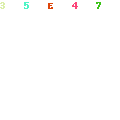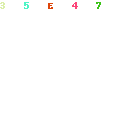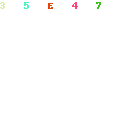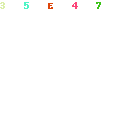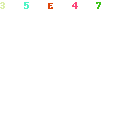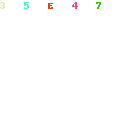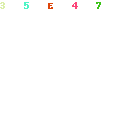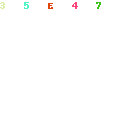 We’ve all worked the keyboards till our fingertips are bruised getting our books into shape for readers to actually read and enjoy. At some point, towards the end of the editing and rewrite drudgery, I need a break. I’ll assume we all do, and that’s a good point to start thinking about your cover design, if you haven’t already been carrying the whole idea, or components of it around inside you head for months and months. Putting together a hard hitting cover design will require a whole different set of tools from writing, although you’ll use some of your well-honed writing skills on the cover, you’ll need to put on a new cap – the graphics designer cap…
We’ve all worked the keyboards till our fingertips are bruised getting our books into shape for readers to actually read and enjoy. At some point, towards the end of the editing and rewrite drudgery, I need a break. I’ll assume we all do, and that’s a good point to start thinking about your cover design, if you haven’t already been carrying the whole idea, or components of it around inside you head for months and months. Putting together a hard hitting cover design will require a whole different set of tools from writing, although you’ll use some of your well-honed writing skills on the cover, you’ll need to put on a new cap – the graphics designer cap…
When I was fresh out of school, the guys who worked the Linotype machines setting hot metal for newspaper type galleys and the pressmen (very few presswomen at the time) wore hats they made by folding last nighty’s sports section, to protect their hair from ink, etc. and give them a place to stick a couple of extra red pencils and/or grease pencils.
That’s not what I mean. I mean, it’s time to start thinking about graphics for your book in a new way. The way a craftsman thinks about an upcoming project: Who is this for? What will it be made of? What will it accomplish? The answers will help organize the tools and materials that will be used in completing the work. There’s a bit of design philosophy and some scientific touchy-feely stuff, too, but I’ll hold it down. You can skip it if you want, but it will give you a better idea of why we’re doing what we’re doing.
Depending upon your book’s distribution channels, your book’s cover should be designed for:
1. The book seller
2. The book reader
3. The book’s content
Your book cover is packaging for a product you are going to be selling. The way in which you will be marketing it will have major implications for the effectiveness of the design. Let’s say, that you intend to use traditional distribution as your primary marketing focus. That means book stores. The best place to start the design process is to visit a few, if you haven’t had the time lately. I don’t expect you’ve had a lot of free time on your hands for quite a while, but take some now.
As you pass the front desk, note any Point of Purchase promotion going on, especially book posters and displays. If you can, without being too obvious, jot down the titles, and the sizes of the books displayed on the counter for later reference. See if any of these are in a similar genre to your book. Then, go to appropriate sections to your book, and see what’s in the stacks. Are there books also displayed flat on tables for your genre. If either a book spine in the stacks, or a cover on a table attract your eye more than others, pick it up, check out how the cover is put together and try to jot down the first three things about the cover that got your attention, including color, besides the title or author(which may be memorable from marketing and promotional exposure).
The point of this exercise is to begin training your eye to “see” book covers as product packaging, and as individual objects composed of several key elements. In good design, these elements are arranged in such a way that they motivate you to hold the book, open the cover and begin reading the book. Some work better than others. You’ll need to learn what these often subjective attributes are. Whether you have the right terminology to label these attributes doesn’t matter – you will develop your eye to “see” what works – what attracts and hold your attention and what doesn’t.
Pick it up…
If a cover does the right thing, pick up the book and turn it over. Read and file away what about the cover, back blurb, images, Titling, etc. makes you want to open it up. Notice, especially how your eyes move over the cover. Where is your eye led? Does your eye re-visit certain areas of the cover? There is an entire science of the study of reader eye movement that has been called into action in the graphic design field, especially in advertising and packaging design. Most people’s eyes move in predictable ways. These ways can be exploited to create more effective design.
If you’re not motivated to open it, file that fact and ask yourself what distracted you or gave you the feeling not to bother to open it up. These are important points, and will vary from book to book. Remember not all the covers that held your attention will continue to hold it once in hand. Be sure to remember especially the covers that you put down before opening.
You’ll will need to find as many examples of what works once your attention is held, and the book is picked up, as what doesn’t. You’ll need to “see” a lot of covers and pick up a lot of books before you begin to notice the graphic elements of the designs as separate from the words set in type on them. Learning to discern the fine point of manipulating graphic elements for best effect takes years, but getting used to seeing those elements in a book cover is something that will begin to take place after only a few visits to a few different book sellers.
What we’ve learned…
You’ll come to some conclusions about the designs of covers. You’ll need to be able to see through differences in size, as larger books (trim-size here, not thickness…yet) will attract and hold your eye longer, so sort out primarily any notes regarding similar sizes to your book. Not all designs are as effective in every size. There are a few element decisions which will be influenced a great deal by the finished size alone.
Images…
Color alone is a very important element, as is whether the cover is a photographic, illustrative or typographic design. In my experience, speaking of novels and some non-fiction historic genres, I believe photographic cover designs can hold a reader’s attention longer than the other two types of covers. It is a true fact in most product advertising design, that whether the ad is set up to feature the product, or a life-style associated “benefit” image; photos (and now, video) work in print and in broadcast media better, in most case that illustration or typographic only advertising. The other two types, though have very effective uses in specific areas. I’ll deal with those types as well as additional color considerations, next week.
The ascendancy of photography is based in part upon scores of case and focus studies that have shown that it works. The idea is to get the prospect’s eyes to linger on the cover image long enough to begin to associate familiar experiences, items, etc., from their own lives. While this is going on, the “magic” takes over. Key graphic elements, ad copy and headlines have a chance to penetrate the often hard, shell of resistance. If a tiny spark of familiarity and empathy can be kindled, most of the job of selling has been done.
Bored to tears yet? Let’s concentrate, right now, upon photographic images. Where can you find them? Should you go through all the shoe boxes of snapshots stored in your closet? Maybe.
Image Resources…
I recommend visiting online providers of stock photo images. Do keyword searches for images from your book, your intended reader market, even place names and key phrases from your prose. Stock Photo houses, such as Comstock, Veer and Corbis have achieved their high ranking in advertising design circles because of the way their catalogues are organized to provide relevant images. Each house will have a specialty. For your book, each will probably offer several images that will relate in some way, to creating interest in reading your book. They may show a feeling, a mood, or illustrate a setting, even items used by your Primary Characters.
Whatever the glue is, stick with it.
If a substance, such as mud, or water is an underlying “glue” throughout your book, then that kind of image may be most appropriate. Remember, in your cover image choices, you’re not trying to answer all the reader’s mental questions – you’re trying to establish the need to open the book and read it. A mysterious setting, a dangerous image, all may contribute towards establishing the intended feeling in the viewer, motivating them to pick up your book, turn it over, study the back blurb, then open it up. Later, they may receive a small, bonus gift in the form of an “Aha” moment as they understand why the image was chosen for the cover!
You may find a handful of appropriate images available from each site, or you may only find a few online across many searches, but the next step will be to consider each of them in turn as potential covers. Most sites will allow you to download low resolution samples of the images you are interested in for “comping”, which is the term for creating full color mock-ups for presentation. It can be useful to learn how to use a basic graphics program at this point, or you may have a friend or colleague who can give you assistance in this area. Oh …also buy a bunch of high-grade glossy inkjet printer paper, as well (you did run out and buy that printer, didn’t you?).
A short digression, here, if you’ll prop up your eyelids a bit longer. I have been using CorelDraw graphics suite for many years, which is an image/bitmapped studio system for photo bitmapped images (resolution and size dependant) as well as vector graphics (for graphics elements including typography, which will not be resolution and size dependent: scale-able). There are several other design and photo software suites from Adobe and Quark among others, but initially I purchased CorelDraw because it was hundreds of dollars cheaper than the others and provided the same capabilities as well as hundreds and hundreds of different type fonts. Of course, I soon learned that I really only use a few of these, but at the time, in 1985, it was exciting! I also couldn’t afford a Macintosh at the time, so my software choices were also limited by the PC platform – no longer much of a limit at all.
I usually create a composite cover image in the vector program using these steps:
1. Set up page layout and trim size, adding any folds or scoring (read: spine and back cover) as needed. Cover Templates can come in handy here, also page count, which will determine your spine thickness..
2. Import all the photographic bitmap elements,
3. Resample bitmaps if necessary (changing size and/or resolution), and adjust contrast and color balance, using the photo-editing accessory. The final touch, if needed will be to apply unsharp masking at a reasonable level (too much gives image components ghost haklos and harsh edge definitions) after all image editing is complete.
4. Convert all bitmaps to CMYK (process printing color) format if proofing for print. Leave it RGB if proofing for online presentation. If RGB, look at the proof on your monitor, not a printed sample.
5. Add typography and other scale-able vector graphics elements in appropriately valued areas with little distracting texture,
6. Tweak until it looks the way you want it, make all elements align along pre-determined invisible lines, then exporting the whole thing to a jpg bitmapped format for reproduction as a proof on my trusty photo printer.
I always make up rough proofs for opinion gathering, using several different images, but always use the same simple typography (at first) to concentrate upon how effective the image alone is. The book title and authors name are all I use to proof comps. If there are nice, light areas in the right part of the image, I use darker, related-color type surprinted over the image. If there are nice, dark areas, I knock out the type (white on a dark background, for example). I use the same type font on all examples, to make the image the most important single element in the overall design. The type weight, size and placement should be chosen to balance and enhance the natural eye movements that take place on a printed page. Composition is an art in itself, but we’ll suffice to say, work it til it’s right, and if it’s not broken, don’t fix it! Noodling a cover is the same as over-editing a book. You can fix it until all the life is gone from it. Now, back to the selection process…
The Money Part…
At this point, you need to have reality intrude a bit. Stock photos are sold two ways. First, at a fixed price, Royalty Free, based upon the size of the finished reproduction. The other way is to pay royalties for each use and published instance of the image, based upon what kind of use, what kind of media and the expected circulation potential. If you have unlimited funds, this is the way to go, as usually the best (subjective word here) images are managed and sold this way. I’ve found a wealth of material is out there, Royalty Free, and this is probably the way you’ll want to go.
You always need to pay for the use of the cover image or images, unless you own a photograph that is perfect for your cover. You may have taken it yourself (in which case, you own the photo rights completely, but if it is of another person or recognizable place or landmark, you may need to secure model and/or property release documents for the cover use. Stock photography is almost always fully released when sold. But not always. Be sure. You will receive a rights receipt, which you should protect carefully when you have decided and paid for an image. You will also need to understand that you are only apying for the rights you asked for when making your purchase – most stock images are licensed, when sold, for a single use. Be sure to read your licensing/release agreement very thoroughly before you pay up..
But you don’t need to pay for an image before working up several dummy covers using different photos. It’s a very useful step you should take. Narrow your selection of potential photos down to three or four that you like equally well, and considering the price, subject, clarity and the purely mechanical ideas of tone and texture fields available for type titling and eye movement considerations. These should be printed in color and show around to people whose opinions are important to your decision. They should all be readers, and they should all read in your genre. Record all their comments. A bookseller or two would also be a good idea if they have the time to give you. A nice technique for bookseller presentation involves finding two or three papervback books of the same trim size and page count as yours, then trimming out your proofs and using rubber cement to glue your cover and spine onto the books to show the bookseller. You can even put your books into the stacks this way, to see how they work spine only. You want your cover to “pop” off the shelf for someone who has not seen it before.
Image Composition, again…
Most stock shots have been professionally composed, and are either basically a portrait (vertically composed) or a landscape (horizontally composed) image. Here the orientation of your book trim will influence your image decision. Keep in mind, that in some case, it will work nicely to wrap the image around the spine and onto the back cover, especially if it presents lots of areas of minimal texture and either light value or dark value. Too much texture underlying typography, even titles and headlines, will distract the reader and create difficulty, so I would try to minimize texture in those areas where type will reside on your design. Look for the right spots.
These areas are prime real estate for Title type and text, assuming all other considerations fall into place. Images can also be cropped, but bear in mind the final size of the image you’re paying for when thinking of cropping. Cropping in “tight” and then having to enlarge a lot to fill the trim size is generally risky if the original resolution of the image is 300 dpi or less. It can create resolution issues in final reproduction and even nasty, fuzzy jaggies along the image areas of high contrast and detail. Keep the need for resolution equal to 300 dpi in it’s final form, hopefully achieved without having to enlarge an image or parts of the image. Reducing to a smaller cropped size does not usually create issues, and is generally a safer way to go, but larger, high resolution images cost more, so you have to balance cost versus application when considering image costs.
One design that can make use of smaller, tighter cropped images, is a layout that makes use of more than one image along with the type on a color or textural background. Depending upon how appropriate this may be considering the book’s content, and upon the length of the title, this may actually be a potential consideration and savings if smaller images with less resolution can be used successfully. My only issue with this idea, is that the design aspects of the cover layout will need to be much more refined to pull all the elements together for maximum attention-holding, attracting value, especially in a trade paperback size. A multi-line title can also prove to be much too distracting. This kind of layout also requires a lot of refinement in image alignment and order. I generally go for the easier path of a great single image, bled all around (no borders) and simple titling.
When designing for smaller sizes, the key is simplicity and readability. If you have a smaller space to work your magic, it needs to be very arresting. Use a very simple concept overall, to get the desired results. A larger scale cover gives you more latitude. Oversized books, especially, usually displayed on sellers tables, carry have a lot more space for your “presentation”. While simplicity is usually the best approach, there might be certain types of books that need to involve the prospect more – a “how to” book for example. Men – I’m one of those – tend to like to tinker, so appealing to the tinkerer in potential readers is smart design. In this case, additional image “situations” may pose some additional questions. This may lead to the prospect opening the cover up to look for specific answers. But enough theoretic blither…
Let me give you an example of a trade paperback book front cover design. Below is the front cover of my first novel, The Red Gate:

It’s a very simple cover, but it has been effective, both flat and on bookstore shelves. I’ve even had some feedback that the cover was the reason they bought the book!
In the next image, I’ve added a grid I like to work with, superimposed over the image. I call this the Rule of Fives. Catchy name, huh? I divide a page space into thirds (two lines) vertically and fourths (three lines) horizontally. Five lines in all. The intersections of these lines correspond, roughly to the places the average readers eye will stop, and are prime locations for informative elements such as title, authors name, and subheading, if one is used. The choice of five lines is based upon which kind of space divisions most people seem visually comfortable with, given natural eye movements. I’ll cover the source of that design philosophy next week, meanwhile…

The idea is to set up natural alignments of necessary elements in your cover design. Some of the individual elements may also be parts of your photo image. Look inside the photo. Considering also the typical eye movements of the reader (clockwise, mid-left, around, then ending top right…). Finessing these into an effective cover is the goal. Let me illustrate:

Here, I’ve added the small primary and secondary circles of eye movement to show how elements within the photograph help support the intended eye movement within the natural inclinations. My main focus is to never lead the eye off the side of the page, but to keep it circling and re-circling. Try to choose well-composed photographic elements that do this – have clear central emphasis and focus – those whose internal elements won’t introduce lines that lead the eye where you don’t want it to go.
In addition, while in the example, the eye is gently guided to rest on the title and author’s name, the subject matter of the image – the wet, craggy Irish coastline – dangerous looking rocks and the arresting sunset coloring all are directly connected to important elements within my book. The setting is an important Primary Character, influencing much more than movement of the people in the story. The orange tones, overall display an arresting color, but only a little intimidating, mostly warm and inviting.
While generally seen as a cheerful color, in this instance, in contrast with the jagged cliffs, it sets up an immediate conflict adding an air of mystery. Just what I want the viewer to feel. It’s the way I first felt when viewing the image – and since I’m a reader, and have feelings, my opinion has some weight here., and so should yours. The color also relates directly to the title , adding questions which hopefully will guide the person holding the book to turn it over. I will mention here, that the image was so good for cover use, I decided to carry it over the spine, leaving an arresting color and simple texture: a strong area for titling. It makes for an easy to spot spine in the booksellers’ stacks! The wrap around image with the abrupt diagonal line formed by the sheer cliffs edge, encourages the reader to turn the book over to see the back, where my pitch awaits. The image was from Corbis, and my out of pocket was under US$100.
Next week, we’ll continue thinking about color selection and we’ll decide how to pick a type font or face. I’ll discuss my take on illustrative or typographical cover designs but I’ll minimize the philosophical and touchy-feely stuff in favor of more Nuts and Bolts – I promise.
The Curmudgeon is also looking forward to your submission of your cover design preliminaries for comment. Email ’em in!
 Walking toward Sam’s, which features dining on its deck over the water amid sailboats moored along the piers and marinas, we spotted this parking sign: “3 Minutes Only Anytime.” Three minutes? Holy cow. There isn’t much on-street parking in Tiburon, but I was left puzzled.
Walking toward Sam’s, which features dining on its deck over the water amid sailboats moored along the piers and marinas, we spotted this parking sign: “3 Minutes Only Anytime.” Three minutes? Holy cow. There isn’t much on-street parking in Tiburon, but I was left puzzled.
 Let’s talk about producing an ad design for your book. You’ve already assembled your media information, and narrowed down the potential venues to the ones you believe will give you the best targeted exposure for your money. On one side, you’ve got a list of the venues, sizes and color considerations that fit your budget. On the other, you’ve listed your “If only…” publications and online venues. These are usually places you’d like to see your ad based upon such careful research as “Wouldn’t my ad look great there! I’d be so proud!” They are usually the kind of venues that would somehow give credibility to your book, just for the association with the venue.
Let’s talk about producing an ad design for your book. You’ve already assembled your media information, and narrowed down the potential venues to the ones you believe will give you the best targeted exposure for your money. On one side, you’ve got a list of the venues, sizes and color considerations that fit your budget. On the other, you’ve listed your “If only…” publications and online venues. These are usually places you’d like to see your ad based upon such careful research as “Wouldn’t my ad look great there! I’d be so proud!” They are usually the kind of venues that would somehow give credibility to your book, just for the association with the venue.
 Here are some tips based on my personal experience. Just make sure you’ve got a large coffee ready – and make your book happen!
Here are some tips based on my personal experience. Just make sure you’ve got a large coffee ready – and make your book happen! That’s because in this size, the ascender has the stronger movement, and aligning the stroing ascender at the beginning of my name with the ascender above moves the eye better. When in doubt, experiment. You shouldn’t see the underlying rule of fives grid as anything more than a suggested framework upon which to work. Your title typography and other elements may align best off the grid, for a specific effect, or for an intended conflict. Don’t be afraid to throw out the rules, at least once for every cover, just to see what you can do – even if it ends up just an example of where you don’t want to go.
That’s because in this size, the ascender has the stronger movement, and aligning the stroing ascender at the beginning of my name with the ascender above moves the eye better. When in doubt, experiment. You shouldn’t see the underlying rule of fives grid as anything more than a suggested framework upon which to work. Your title typography and other elements may align best off the grid, for a specific effect, or for an intended conflict. Don’t be afraid to throw out the rules, at least once for every cover, just to see what you can do – even if it ends up just an example of where you don’t want to go.

